Tips for Selecting a Boat Trailer, Part 1

A boat trailer adds a whole new dimension to owning a small boat, opening up distant waters to exploration not available for boats that remain at a dock or mooring all their lives.
Trailers built today can handle anything from a 12’ (3.7 m) kayak to a 40’ (12.1 m)offshore CC with quad 600’s, but the design, engineering and materials used can make a huge difference on how durable, user-friendly and safe the rig will be.
Painted Steel Trailers
Painted carbon steel trailers are frequently seen under boat packages designed for freshwater use only. Carbon steel is strong, relatively easy to work and also cost-effective. Most entry level package boats for inland waters have a painted carbon-steel trailer under them.

Custom powder-coated painted trailers matched to the hull colors of premium ski and sport boats are also common—they look great and are extremely durable so long as the paint is not deeply scratched. These are more expensive, but are an integral part of the package in rigs with lots of bling.
Galvanized Steel Trailers
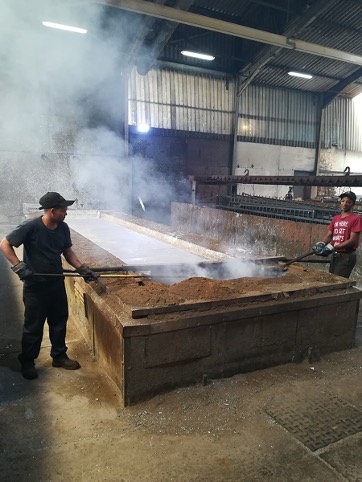
Galvanized steel trailers are a step up from basic painted trailers. The galvanic zinc coating on carbon steel makes it nearly impervious to salt (though you’ll still want a freshwater rinse after launch and reload when possible) and galvanized carbon steel is very strong, though also relatively heavy.
Galvanized steel trailers are common in packages sold for coastal use, and the frames can stand up to many years of saltwater. They’re typically priced above basic painted steel trailers, but are less expensive than aluminum trailers.

Aluminum Trailers
Aluminum trailers have the advantage of very light weight (some smaller models even float due to the buoyancy of large wood bunks and air in the tires) and a high-level of strength when properly engineered and executed. They have exceptional resistance to corrosion in saltwater, and they also look good for years without painting.
They are, however, typically the most expensive choice due to the necessity of extensive inert gas welding processes during assembly, and are usually reserved for premium boat packages.
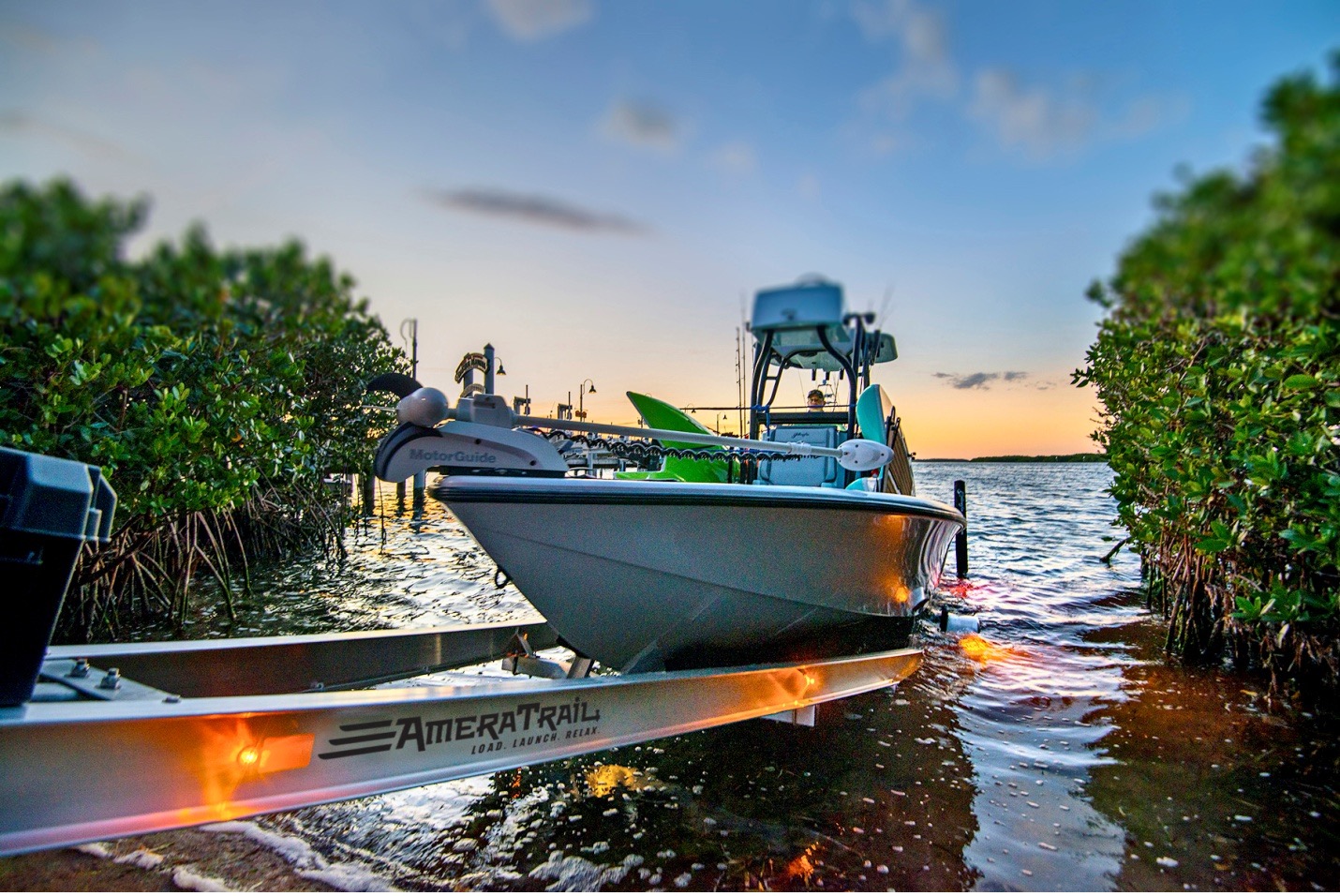
Custom-built trailers for larger boats are almost always built of aluminum. This gives the combination of strength with minimal weight that allows for an increased payload and easier towing.
Single, Tandem or Triple Axle?
Single axle trailers are lightweight, easy to back up and inexpensive. They are the standard for boats less than 20’ (6 m) long and weighing less than 2500 lb (1,134 kg).
Single axle trailers are easy to tow, even with smaller vehicles. They keep the weight of the rig at a minimum, and many can even be manually pushed around the driveway during hookup thanks to a roller dolly on the winch stand.
Single-axles have the advantage of being very easy to back up into tight spaces—simply turn the bottom of your steering wheel in the direction you want the trailer to go and it slides obediently into place. (Well, maybe not that easy the first few times but much more easily than with tandem and triple-axle rigs.)
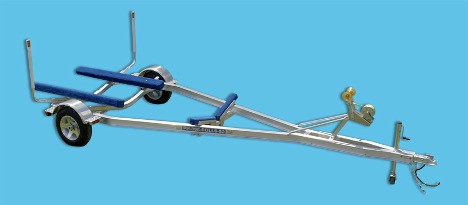
For boats above 2500 pounds, multiple axles are needed to spread out the weight on additional sets of tires and wheels.
Naturally, there’s a price jump when the necessary running gear is added and the much more robust build is completed.
Tandem and triple-axle trailers can handle much larger and heavier boats, with the largest suitable for boats up to 20,000 lb (9,072 kg) and 40’ (12.1 m) long. Of course, your tow vehicle had better be rated to handle all that weight or you’re going to have expensive problems in the transmission and running gear very quickly. And you also need a hitch rated to haul the load.
If you have a flat on a multi-axle trailer, you can still ease along on the remaining inflated tire far enough to get it fixed in most cases. And you can also slide that side up on a ramp and change the tire easily, rather than dealing with jacking the trailer up with a conventional jack.
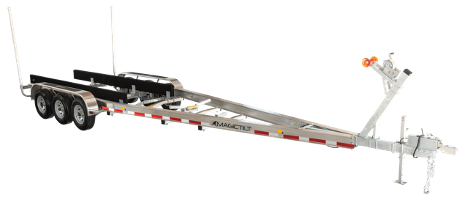
Note that a trailer for a 40’ (12.1 m) boat is typically at least 44’ (13.4 m) long, so this is a significant challenge for those without a lot of experience in towing (and backing) heavy trailers with powerful heavy-duty trucks.
Backing these large trailers works exactly the same way as backing a single-axle, but it takes longer for the trailer to respond so you must go slowly and watch the movement of the trailer carefully in your rearview mirror until the direction adjusts to the motion of your steering wheel. (Practice in a vacant parking lot is a must when you start out—spend an hour or two in practice and everyone at the boat ramp will thank you.)
Drive-on or Break-Frame?
Most trailers for anything larger than a 20-footer are now drive-ons, which are low-slung trailers designed to be fully submerged, with waterproof bearings, tail-lights and wiring. Tilt or break frame trailers are now rare as dodo birds, though they are provided with a few small boat packages.
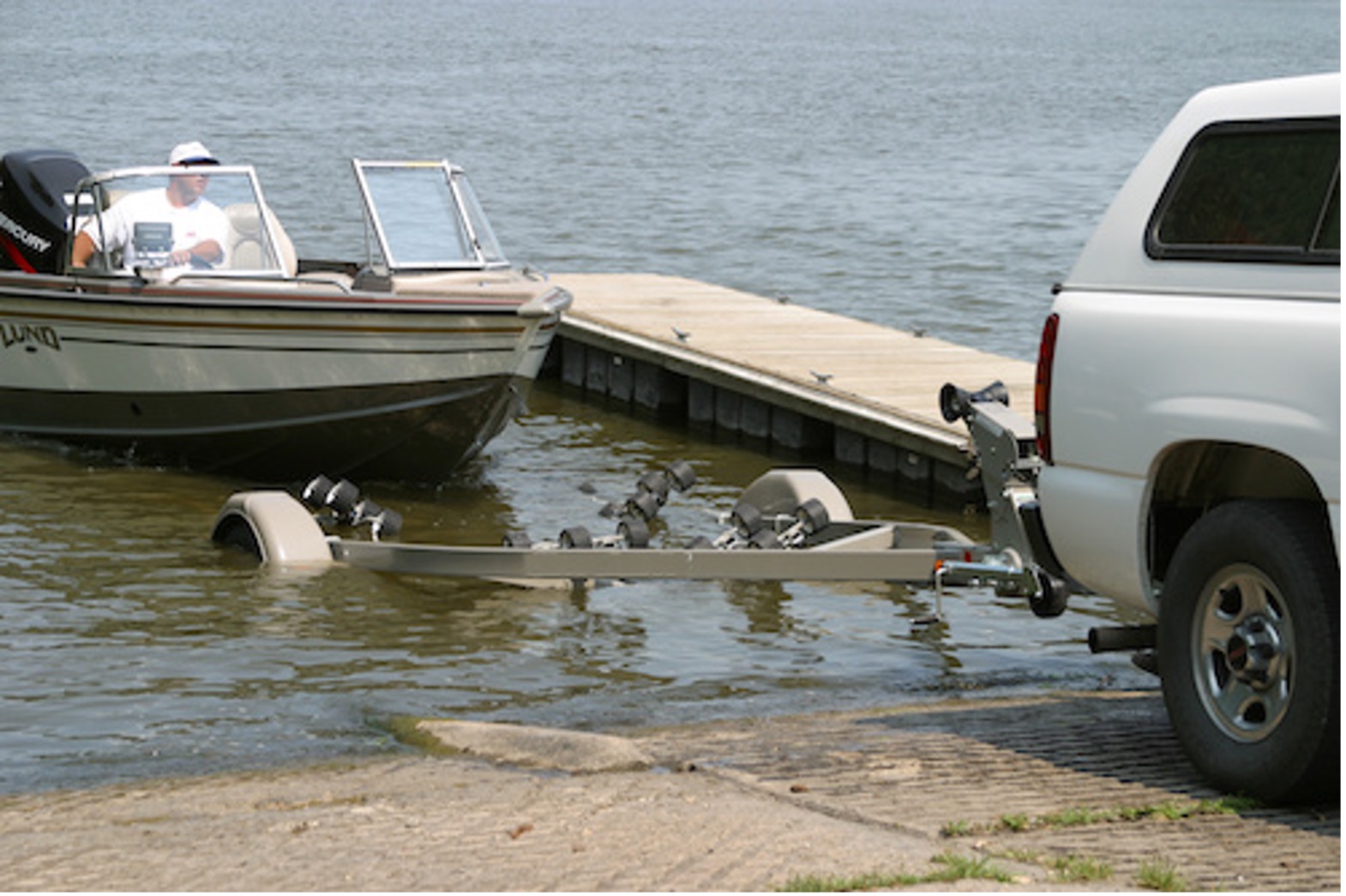
Drive-ons allow you to simply drive your boat onto the bunks until the bow snugs against the jackstand. To launch, you back in until the stern floats, then put the engine in reverse and ease off.
Of course, that’s the way it works if you have a ramp with just the right angle and depth, if you put your trailer in just the right distance, and if you get your boat aligned perfectly despite wind and current.
If any of these factors goes wrong, it can get a bit challenging for novices. After you do it a few dozen times, observing exactly what works best for your rig, however, it becomes second nature.
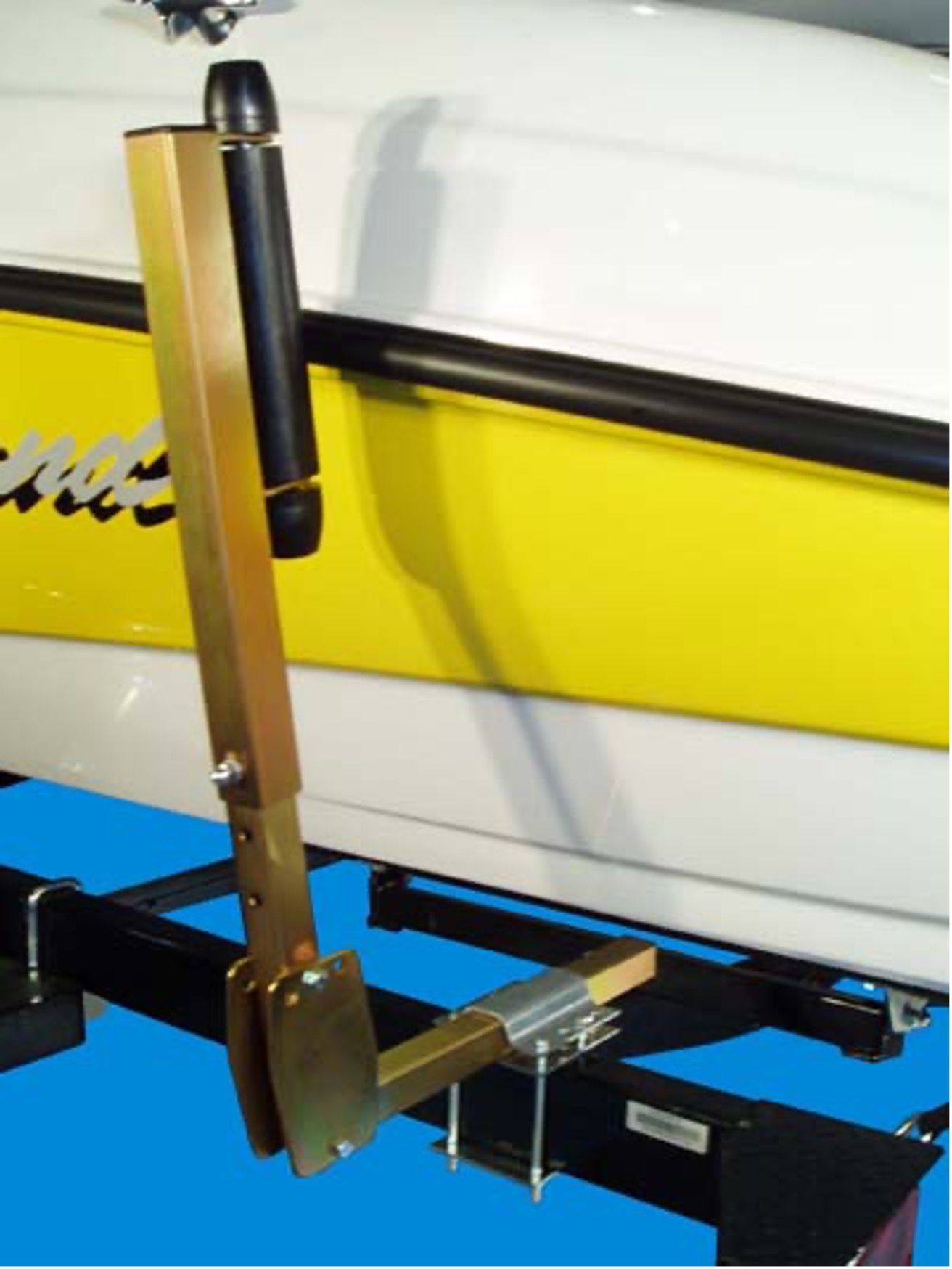
Bunk or Rollers?
Most trailers are built with pressure-treated wood bunks covered in marine-grade carpet or other material that allows the hull to glide into place on reloading and guards the gelcoat against scratching (to some degree, at least).
(Tip: If you back the trailer in far enough to completely submerge the bunks, then pull back out to the proper loading depth, your boat will load much easier than if you try it with the carpeted bunks completely dry.)

Roller bunk trailers take away the friction of the carpeted wood bunks with large rubber or composite rollers mounted on flexible frames that can adjust to fit the hull as it rolls into place.
They definitely allow boats to roll on and off much easier than conventional bunk trailers. In fact, they can allow a boat to roll off too easily—it’s essential to keep the bow eye hooked to the winch strap when backing down the ramp or you may launch before you hit the water!
Inboard, Sterndrive or Outboard?
Outboard and sterndrive boats present no problems for the typical trailer because the drives are at the transom and can be trimmed up as the boat rides onto the trailer.
Inboards, on the other hand, require specialized frames with stepped frame members aft so that the running gear under the boat does not contact the frame. These trailers also often have separation in the bunks fore and aft so that boats can be loaded via hoist and sling, with space to allow removing the sling.
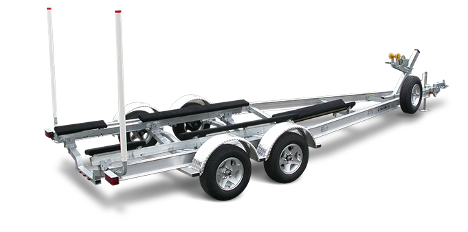
There’s lots more to know about selecting a trailer that will be just right for your boating lifestyle—we’ll look at more of the features in Part 2.